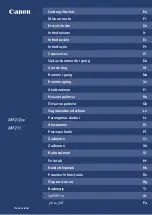
FORMS LAYOUT CONSIDERATIONS
These two examples of awkwardly entering lines into the line
table result in lines that are visually contiguous but not logically
contiguous. As indicated in the subsequent sections that
describe problems with boxes, such conditions can result in a
situation where FDL is unable to find a box or creates a box that
has one or both of its dimensions equal to zero.
Suggested techniques for
entering lines
To enter lines, draw the longest possible logical line first, then
draw any shorter elements. If the logical line consists of different
types of lines (for example, solid and dotted), draw a SOLID 0
line first extending over the full range of the logical line. For
instance, the previously cited example of five line segments of
five units each might have consisted of alternating solid and
dotted lines. In that case, the most reasonable method of
specifying the total line would be as follows:
AT 0 LINE 0 TO 25 USING SOLID 0;
AT 0 LINE 0 TO 5 USING SOLID 2 AND AT 10, 20;
AT 0 LINE 5 TO 10 USING DOTTED 1 AND AT 15;
Figure 5-3 shows the line that would be drawn:
Figure 5-3.
Line made up of different types of lines
Scan line density
Scan line density depends upon printer and imaging speed.
Therefore, it can vary with each product and even with different
configurations of the same product. The basic limitation is linked
to dispatchable items, which become visible in character count
and number of lines.
Line density errors
Both characters and lines contribute to the dispatchable item
count. When one dispatchable item is superimposed over
another dispatchable item, the result is considered two
dispatchable items by the system. When too many dispatchable
items are present on a scan line on the long axis of the paper,
the LPS operating system displays a line density error message:
OS6950 LINE DENSITY EXCEEDED
The hardware limitation of 320 dispatchable items per 300 spots
per inch (spi) scan line includes the required overhead of two
dispatchable items. For example, a dispatchable item could be a
maximum of 32 dots wide for 300 spi and thus might be a full
character (less than point size 8 or 9), a fraction of a character
(greater than point size 8 or 9), or a line segment that is equal to
or smaller than 32 dots in the scan direction.
Determining line density limitations
Determine 300-spi line density limitations as follows:
•
Each 32 dots (or fraction thereof) of a line drawn on the long
axis of the paper is one dispatchable item.
•
Each line drawn on the short axis of the paper is one
dispatchable item.
XEROX 4850/4890 HIGHLIGHT COLOR LPS FORMS CREATION REFERENCE
5-3
















































